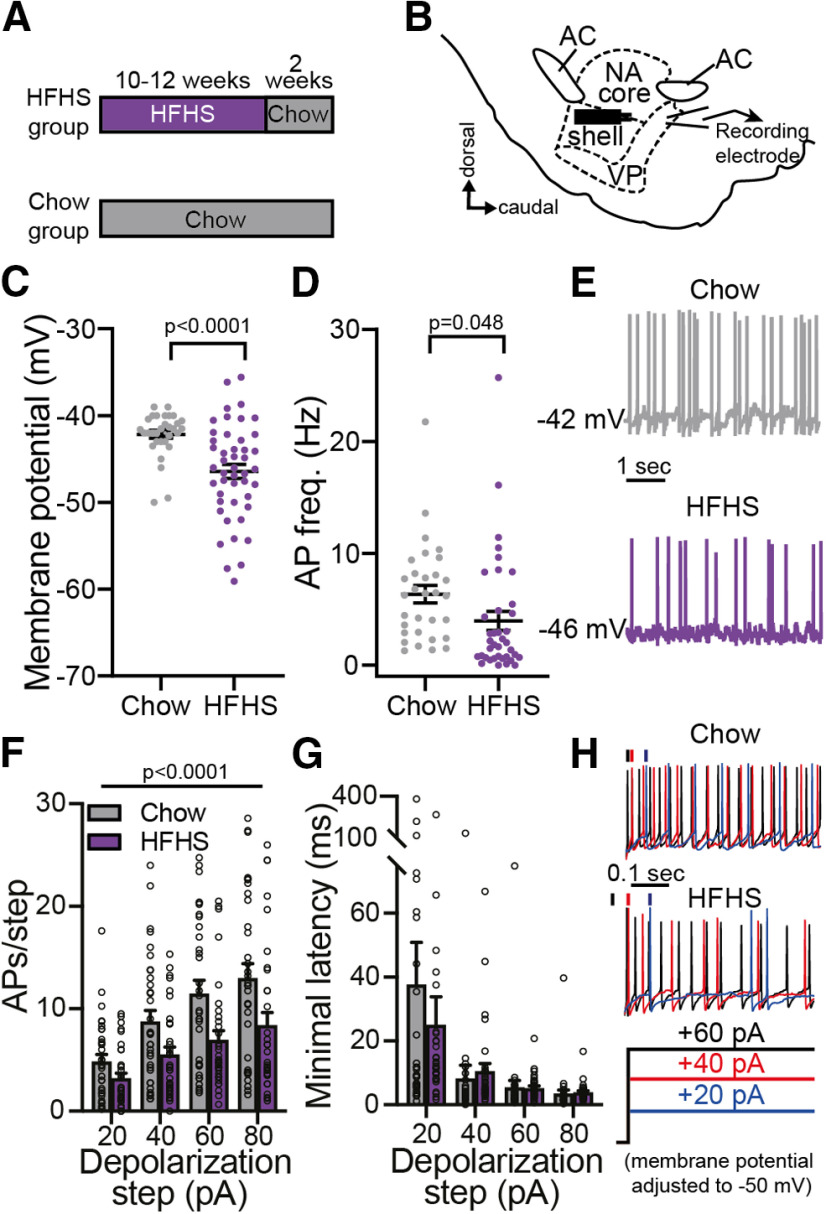Figure 1.
Chronic high-fat high-sugar diet hyperpolarizes ventral pallidum neurons and inhibits their firing rate. A, Experimental timeline. Mice in the HFHS group received an HFHS diet ad libitum in their home cages for 10–12 weeks and then returned to chow diet for 2 additional weeks before recordings. The control Chow group received regular chow during the same period of time. B, Recording setup. VP neurons were recorded from in sagittal slices while activating incoming axons using a bipolar stimulating electrode placed ∼300 μm rostral to recorded cells. AC, Anterior commissure; NA, nucleus accumbens. C, D, VP neurons of HFHS mice had lower membrane potential (C) and lower action potential (AP) frequency (D) compared with chow mice (two-tailed unpaired t tests). E, Representative current-clamp traces. F, G, In a series of incrementing depolarizing steps the firing rate was significantly lower in VP neurons of HFHS mice compared with chow mice (F; two-way ANOVA), but there was no difference in the minimal latency to the first action potential (G). H, Representative traces at three depolarizing steps. Data taken from 32–46 cells in 14–21 mice/group. Data are presented as the mean ± SEM.

